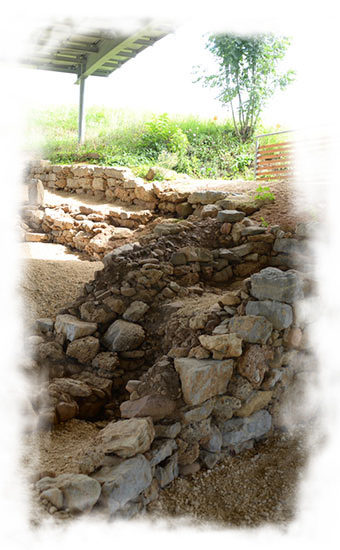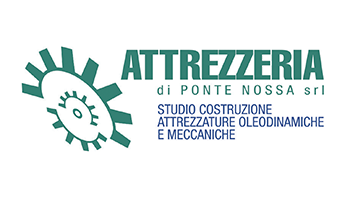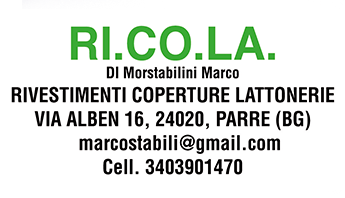Brief history
 According to some scholars, the Celtic toponym Par - first latinized and then turned into Parre over
centuries - means “high place”, whereas for others it means “big field”. Thanks to random findings
in 1983 and excavation works carried out from 1983 to 1994, Parre is now considered as “an
emblematic site of the Alpine world” and the hypothesis that Parre is, in reality, Parra the Oppidum
Orobiorum - mentioned by Pliny in his “Naturalis Historia” regarding a Cato’s passage - is gaining
grounds. Indeed, there was a human settlement on the river terrace overlooking Ponte Nossa, from
the end of the Bronze Age to the late Roman Age. Moreover, the “Villa de Parre”, a ruralsettlement
in Parre, is also mentioned in a document of 928.
At the end of the 12th century , after gainingindependence, the municipality - governedby two consuls
- was established. After experiencingthe consequences of civilstruggles and the alternation of various
Signorie (governing authorities during the Medieval and Renaissance periods), the upper Seriana
Valley (includingParre)sent its representativesto Venice to declare loyalty to theRepublic of Venice
and to ask for help and protection. The domination of the Republic of Venice, characterized by the
preservation of well-established institutions, ended in 1797 with the arrival of French troops. Neither
the following Austrian domination nor the Renaissance events upset Parre’s inhabitants, who always
showed “quiet general public spirit”.
For centuries Parre was a land of farmers and shepherds , who brought their herds to the Oltrepò
Pavese and Piedmont in winter, and went through Vatellina and Poschiavina valleys in summer,
providing Gandino and other weaving factories in the valley with wool.
The town has preserved its characteristic division into two urban cores Parre Inferiore or in dialect
Par Sota (the lower part of Parre) and Parre Superiore or Par Sura (the upper one). The town then
expanded to include those areas once devoted to agriculture, such as Aghèr, Costa Erta, Campella,
and Valzella. Suggestive evidence, dating back to this period, is still visible in ancient houses with
massive stone walls, beautiful arcades, small windows, columns, and arches. These historical traces
can be seen, among others, in the Cominelli’s house - the cradle of Barons Belliboni, who later
became Princes Von Paarin Austria - or in the ones nextto St. Cristopher’s arch orin Via Tiraboschi.
However, the most precious artistic treasures are preserved within the churches , particularly in the
parish church dedicated to St. Peter and in the little Church of Saint Roch. The oratory of the Most
Holy Trinity on Mount Cüsen (16th-18th century) and that dedicated to St. Anthony on Mount Alino
are enchanting thanks to both the natural environment and the panorama.
According to some scholars, the Celtic toponym Par - first latinized and then turned into Parre over
centuries - means “high place”, whereas for others it means “big field”. Thanks to random findings
in 1983 and excavation works carried out from 1983 to 1994, Parre is now considered as “an
emblematic site of the Alpine world” and the hypothesis that Parre is, in reality, Parra the Oppidum
Orobiorum - mentioned by Pliny in his “Naturalis Historia” regarding a Cato’s passage - is gaining
grounds. Indeed, there was a human settlement on the river terrace overlooking Ponte Nossa, from
the end of the Bronze Age to the late Roman Age. Moreover, the “Villa de Parre”, a ruralsettlement
in Parre, is also mentioned in a document of 928.
At the end of the 12th century , after gainingindependence, the municipality - governedby two consuls
- was established. After experiencingthe consequences of civilstruggles and the alternation of various
Signorie (governing authorities during the Medieval and Renaissance periods), the upper Seriana
Valley (includingParre)sent its representativesto Venice to declare loyalty to theRepublic of Venice
and to ask for help and protection. The domination of the Republic of Venice, characterized by the
preservation of well-established institutions, ended in 1797 with the arrival of French troops. Neither
the following Austrian domination nor the Renaissance events upset Parre’s inhabitants, who always
showed “quiet general public spirit”.
For centuries Parre was a land of farmers and shepherds , who brought their herds to the Oltrepò
Pavese and Piedmont in winter, and went through Vatellina and Poschiavina valleys in summer,
providing Gandino and other weaving factories in the valley with wool.
The town has preserved its characteristic division into two urban cores Parre Inferiore or in dialect
Par Sota (the lower part of Parre) and Parre Superiore or Par Sura (the upper one). The town then
expanded to include those areas once devoted to agriculture, such as Aghèr, Costa Erta, Campella,
and Valzella. Suggestive evidence, dating back to this period, is still visible in ancient houses with
massive stone walls, beautiful arcades, small windows, columns, and arches. These historical traces
can be seen, among others, in the Cominelli’s house - the cradle of Barons Belliboni, who later
became Princes Von Paarin Austria - or in the ones nextto St. Cristopher’s arch orin Via Tiraboschi.
However, the most precious artistic treasures are preserved within the churches , particularly in the
parish church dedicated to St. Peter and in the little Church of Saint Roch. The oratory of the Most
Holy Trinity on Mount Cüsen (16th-18th century) and that dedicated to St. Anthony on Mount Alino
are enchanting thanks to both the natural environment and the panorama.

Martorasco
The small hamlet of Martorasco is located on the right bank of the Serio river, on a small upland in
front of Villa d’Ogna’s factories. Surrounded by nature, it houses a sober little church dedicated to
St. Pascal. Martorasco is a must-visit place for those who walk along the Alto Serio trail.
Sant'Alberto
The house of the Blessed Alberto da Bergamo is of great importance too. Son of peasants from Villa
d’Ogna, he was married to a miserly and stingy woman who constantly mistreated and insulted him,
especially every time he did charity work. He moved then to Cremona, where he worked as a day
laborer and brentatore (those who bring wine with a traditional container known as Brenta), entering
the Secular Franciscan Order. He dedicated his life to generosity and assistance to the needy and near
7
St. Matthias Church he founded a hospital for the sick. He was much loved for his benevolence and
even prodigious facts related to his figure have been recognized.
Proclaimed Blessed in 1748, he is the patron saint of the Brentatori and venerated in numerous cities
in Lombardy and Emilia Romagna . Relics of the Blessed are venerated in the parish church of Villa
d’Ogna.
Over the following centuries, the house of the Blessed , in the hamlet of Sant'Alberto, was converted
into a convent for the Observants known as “Zoccolanti”, a Franciscan family deriving from the
division made by Pope Leo X. The convent was suppressed by Napoleon in 1810, whereas the
building was destroyed by a landslide in 1813.Even today, you can see the apse of what was, at that
time, an adjacentsanctuary. “Bosco deiFrati” (lit.friars’forest) or “Valle deiFrati” (lit. friars’ valley)
are toponyms still used nowadays to identify the places overlooking the convent; these expressions
recall the friars’ habit to reach Mount Alino in order to celebrate Mass at the St. Anthony of Padua
Church on the mostsolemn festivities. You can stillsee a trail connectingthe conventwith the church
on Mount Alino.


“Parra Oppidum degli Orobi” archeological site
In 1883 , during agricultural work in the Castèl (ancient fortified center), a circular well containing
pieces of worked bronze (weighing more than a ton) was discovered by chance. However, the
importance of the discovery was underestimated by the owners of the time who sold the findings to
a bells-producing company based in Milan.
Only Professor Mantovani understood its importance and he managed to obtain some pieces, partly
still preserved in the archaeological museum of Bergamo. On the centenary of the discovery,
Raffaella Poggiani Keller conducted a new excavation campaign that brought to light findings from
the first and second Iron Age. In the autumn of 1994 , the bottoms of some huts dating back to the late
Bronze Age and the second Iron Age came to light, including a beautiful floor made of local stone
slabs.
Today, a museum space - in Piazza San Rocco - called “Antiquarium” together with an entirely
covered archaeologicalsite - near the Castèl - is open to the public, particularly thanks to a continued
commitment by different municipalities.
Visit the Facebook page of the archaeological site.
Newsletter
Keep updated on Parre’s news and events.





























































































